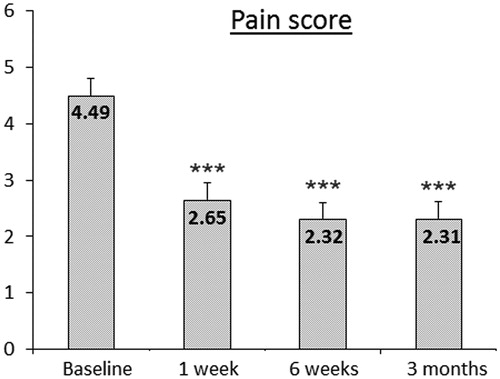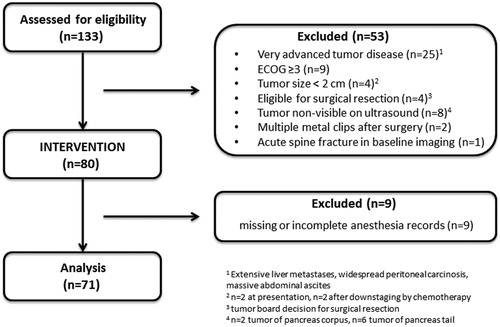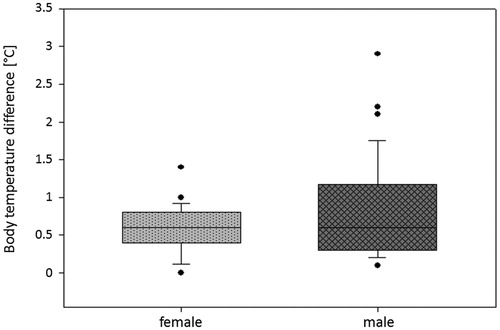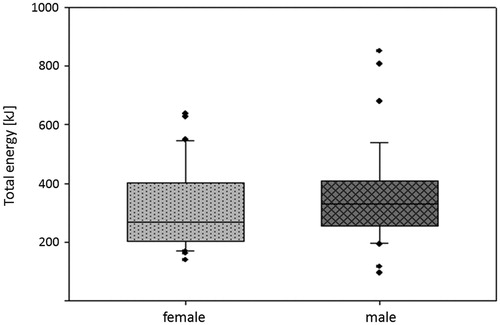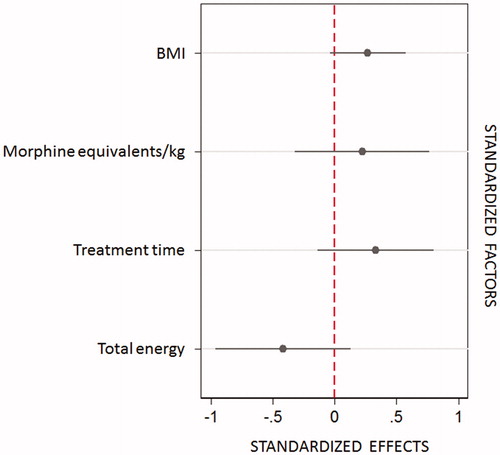Figures & data
Table 1. Patient demographics and anesthesia-related data.
Table 2. Intervention- and anesthesia-related data.
Figure 4. Changes in pain score (NRS, numeric rating scale, range 0–10; 0 ‘no pain at all’, 10 ‘most intense pain imaginable’) after HIFU treatment of pancreatic cancer patients (n = 71). Average pain relief of 41% at 6 weeks and 48% at 3 months follow-up compared to baseline was observed after HIFU treatment.
